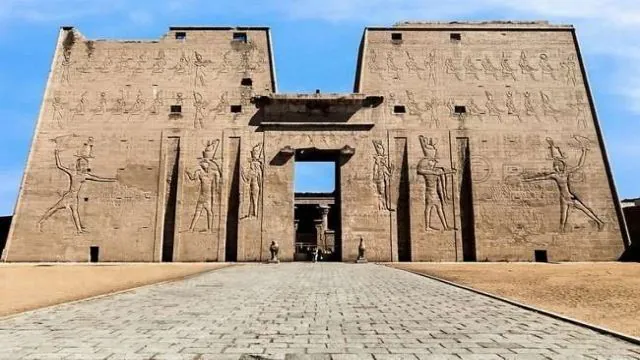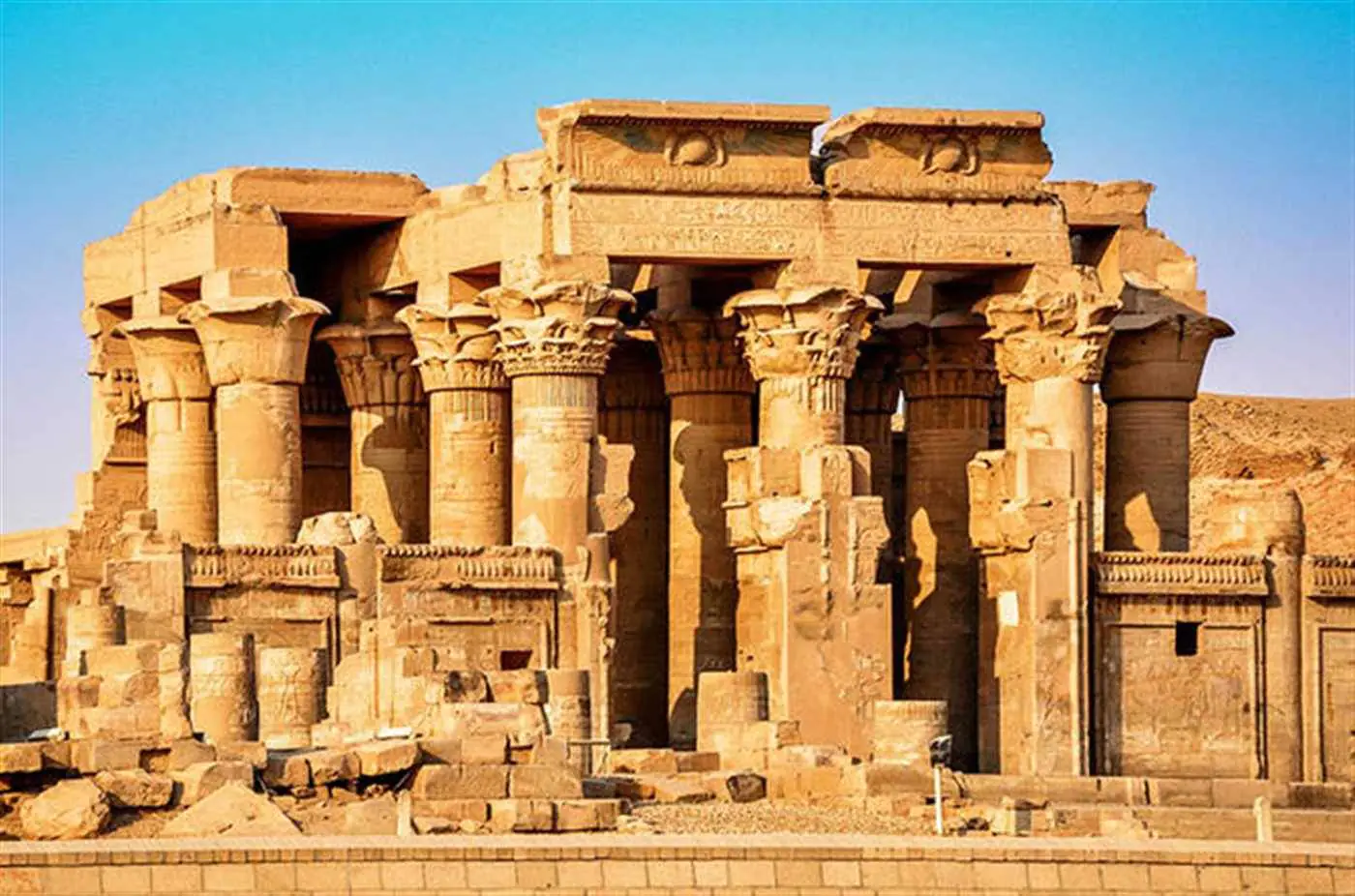Edfu Temple is located in the city of Edfu, 60 kilometers north of Aswan. It is a
sandstone temple. It is about 138 meters long and about 76 meters wide. This
temple was built on another, older temple from the 18th Dynasty
. This temple was built in 237 BC.
Edfu Temple

Built and completed by Ptolemy III Euergetes , Ptolemy The Temple, mythological interpretations
of this temple and all other temples, as well as scenes related to
the idea of the conflict between Horus and Set, between good and evil. The
temple was buried under the sands of the Nile at a depth of about 12 meters
, so the locals
built their houses directly over the temple site. By 1798, only an upper part was visible. From the
outskirts of the institute. In 1860, the archaeologist Auguste
Meret began work on the temple complex and sand removal. The
temple building is about 37 meters long and depicts battles
depicting Ptolemy VIII defeating enemies before Horus. The explanation
provides four cavities to
place the temple flagpoles in front of the facade.
There are two statues depicting the falcon Horus.
The entrance then leads to the open courtyard, where festivities take place, and
then to the Hypostyle Hall, whose ceiling supports columns with capitals in the shape of a papyrus flower. Recent excavations
in the vast hills adjacent to the temple have revealed the age of many inscribed texts and pieces of papyri to the north and west of the city. Several tombs or terraces dating to the Old Kingdom period, as well as tombs from the Middle and New Kingdoms, have been found. The temple is an important tourist attraction and tourism center in Egypt and a frequent stop for many riverboats cruising the Nile.
In 1860, French archaeologist Auguste Mariette began excavation, carefully removing the sand and exposing the majestic structure beneath. The temple stretches around 137 meters in length and includes a variety of chambers and sanctuaries. One striking scene carved into the walls shows Ptolemy VIII presenting captives to Horus—emphasizing the pharaoh’s divine legitimacy and military power. The temple’s massive entrance is flanked by two black granite statues of Horus, symbolizing protection and strength. In front of the pylon, four cavities once held tall flagpoles, marking the temple’s ceremonial importance.
where processions and festivals were held?
Beyond the monumental entrance lies a vast open courtyard, where processions and festivals were held, followed by a Hypostyle Hall supported by columns with papyrus-shaped capitals, evoking the lush vegetation of the Nile. Recent archaeological work in the surrounding hills has uncovered papyri, inscriptions, and tombs from the Old, Middle, and New Kingdoms, offering deeper insight into the region’s ancient legacy. The Temple of Edfu today is not only a major tourist attraction but also a key stop on most Nile River cruises, drawing thousands of visitors who seek to connect with the rich spiritual and architectural traditions of Ancient Egypt.
Why is Edfu temple important?
1. Religious Significance
The temple is dedicated to Horus, one of the most powerful and widely worshipped gods in ancient Egypt. It was a major religious center where rituals, offerings, and festivals took place to honor Horus and celebrate his mythological victory over Set, the god of chaos. This battle symbolized the eternal struggle between good and evil.
2. Best-Preserved Ancient Temple
Edfu Temple is the best-preserved temple in all of Egypt. Built between 237 and 57 BCE during the Ptolemaic dynasty, it survived centuries of sand burial, which protected its structures and carvings. Its excellent condition gives historians, archaeologists, and visitors a rare and authentic glimpse into ancient temple architecture and religious life.
3. Rich Source of Ancient Inscriptions
The walls of the temple are covered with hieroglyphic inscriptions and scenes that provide detailed information about:
-
Ancient Egyptian mythology and religious practices
-
Rituals performed by priests
-
The story of Horus and Set
-
Daily life and beliefs of ancient Egyptians
These texts make Edfu Temple an invaluable resource for scholars studying Egyptology.
4. Architectural Masterpiece
Edfu Temple represents the height of Ptolemaic temple architecture, with grand pylons, columned halls, sanctuaries, and statues. The symmetry, scale, and symbolic layout reflect deep cosmic and religious meaning.
5. Tourism and Cultural Heritage
Today, the Temple of Edfu is a major tourist destination and a key stop on Nile River cruises. It plays an important role in preserving Egypt’s cultural heritage and contributes to the local economy through tourism.
The most beautiful Hurghada excursions
private Schnorcheltour Hurghada

